
Baldomero Fernández-Espartero y Álvarez de Toro was a Spanish marshal and statesman. He served as the Regent of the Realm, three times as Prime Minister and briefly as President of the Congress of Deputies. Throughout his life, he was endowed with a long list of titles such as Prince of Vergara, Duke of la Victoria, Count of Luchana, Viscount of Banderas and was also styled as "the Peacemaker".

Duke of Alburquerque is a hereditary title in the Peerage of Spain, accompanied by the dignity of Grandee and granted in 1464 by Henry IV to Beltrán de la Cueva, his "royal favourite" and grand master of the Order of Santiago. It makes reference to the town of Alburquerque in Badajoz, Spain.
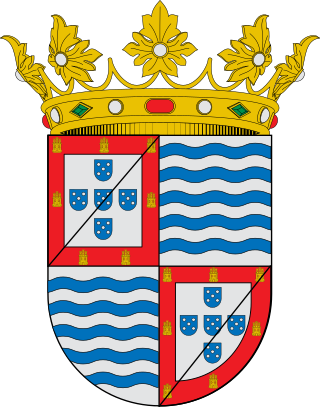
Duke of Abrantes is a hereditary title in the Peerage of Spain, accompanied by the dignity of Grandee and granted in 1642 by Philip IV to Alfonso de Láncaster, son of the 3rd Duke of Aveiro and a great-grandchild of John II of Portugal. It takes its name from the city of Abrantes in Portugal.

Duke of Feria is a hereditary title in the Peerage of Spain accompanied by the dignity of Grandee, granted in 1567 by Philip II to Gómez Suárez de Figueroa, 5th Count of Feria.

Duke of Camiña is a hereditary title in the Peerage of Spain accompanied by the dignity of Grandee, granted in 1619 by Philip III to a Portuguese aristocrat, Miguel de Meneses, 2nd Duke of Vila Real in the peerage of Portugal.

Duke of Escalona is a hereditary title in the peerage of Spain, accompanied by the dignity of Grandee and granted in 1472 by Henry IV to Juan Pacheco, 1st Marquess of Villena.
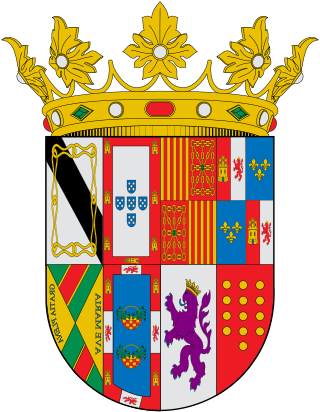
Duke of Arión is an hereditary title in the Peerage of Spain accompanied by the dignity of Grandee, granted in 1725 by Philip V to Baltasar de Zúñiga, viceroy of New Spain.

Duke of Bailén is a hereditary title in the peerage of Spain accompanied by the dignity of Grandee and granted in 1833 by Ferdinand VII to Francisco Javier Castaños for his military achievements during the Peninsular War as Captain general of the Royal Spanish Armies, becoming the first man to destroy a Napoleonic army in an open field battle.

Duke of Tarifa, is an hereditary title in the peerage of Spain, accompanied by the dignity of Grandee. It was granted to Ángela Maria Apolonia Pérez de Barradas y Bernuy on 28 June 1886 by king Alfonso XII. The tile was originally granted as "Duke of Denia and Tarifa" but was separated into two different titles on 22 December 1886 by the Queen Regent, Maria Christina of Austria.

Duke of Denia, is an hereditary title in the peerage of Spain, accompanied by the dignity of Grandee. It was granted to Ángela Maria Apolonia Pérez de Barradas y Bernuy on 28 June 1886 by king Alfonso XII. The tile was originally granted as "Duke of Denia and Tarifa" but was separated into two different titles on 22 December 1886 by the Queen Regent, Maria Christina of Austria.
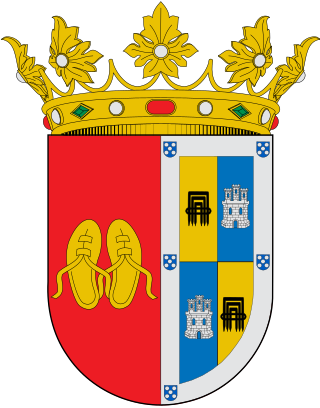
Duke of Almazán is a title of Spanish nobility that is accompanied by the dignity of Grandee of Spain. It was granted to Bernardo Abarca de Bolea y Ornes in 1698 by King Charles II.

Duke of Palata is a hereditary title in the peerage of Spain, accompanied by the dignity of Grandee and granted in 1646 by Philip IV to Francisco Toralto de Aragón, a paternal descendant of Alfonso V of Aragon. The title makes reference to the town of Palata in Campobasso, Italy, where Toraldo's father held a fiefdom.
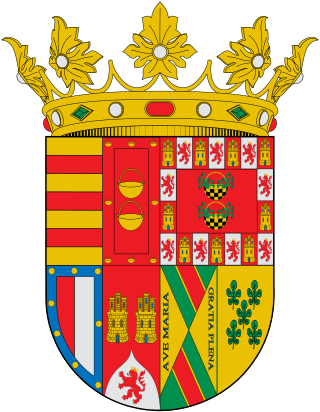
Duke of Terranova is a hereditary title in the Peerage of Spain, accompanied by the dignity of Grandee and granted in 1502 by Ferdinand II to "El Gran Capitán", a general who negotiated the Surrender of Granada and led the Spanish to victory in the Italian Wars. It is a victory title, making reference to the town of Terranova Sappo Minulio in the province of Reggio Calabria, Italy.

Duke of Santángelo is a hereditary title in the Peerage of Spain, accompanied by the dignity of Grandee and granted in 1497 by the Catholic Monarchs to "El Gran Capitán", a general who negotiated the Surrender of Granada and led the Spanish to victory in the Italian Wars. It is a victory title, making reference to the town of Città Sant'Angelo in the Province of Pescara, Italy.
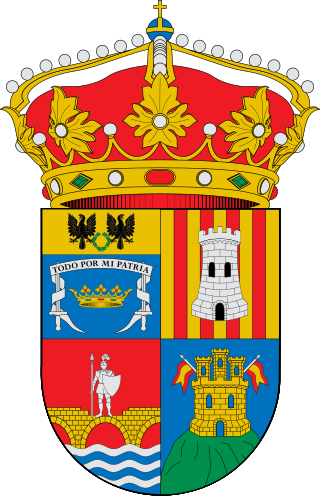
Prince of Vergara was a life title in the Peerage of Spain, granted in 1872 by Amadeo I to Baldomero Espartero, who was Regent of Spain from 1840 to 1843. The title makes reference to the Convention of Vergara, a symbolic embrace between Espartero and Rafael Maroto which put an end to the First Carlist War in 1839.

Duke of Victoria de las Amezcoas is a hereditary title in the Peerage of Spain, accompanied by the dignity of Grandee and granted posthumously in 1836 by carlist pretender to the throne Infante Carlos as Charles V to Tomás de Zumalacárregui, captain general of the Carlist army, along with the Countship of Zumalacárregui.
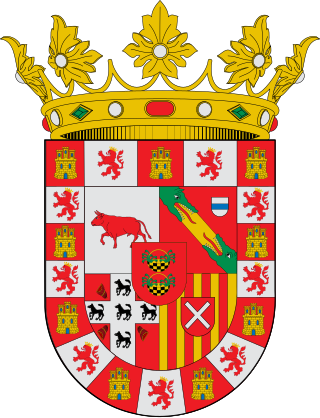
Duke of Ciudad Real is a hereditary title in the Peerage of Spain accompanied by the dignity of Grandee, granted in 1613 by Philip III to Alonso de Idiázquez, 1st Count of Aramayona and Viceroy of Navarre.

Duke of Santisteban del Puerto is a hereditary title in the Peerage of Spain accompanied by the dignity of Grandee, granted in 1738 by Philip V to Manuel de Benavides, 10th Count of Santisteban del Puerto and Brigadier of the Spanish Army.
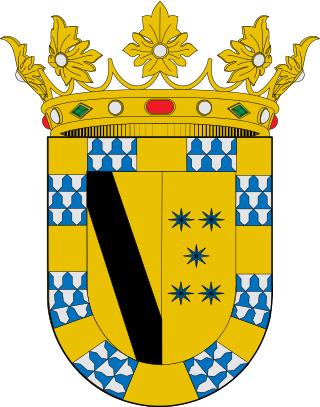
Duke of Lerma is a hereditary title in the Peerage of Spain accompanied by the dignity of Grandee, granted in 1599 by Philip III to Francisco Gómez de Sandoval, 4th Count of Lerma and his royal favourite.

Cipriano Segundo Montesino y Estrada was a Spanish civil engineer and politician. He was a founding committee member of the Royal Academy of Exact, Physical, and Natural Sciences, serving as vice-president and president, and also as a Senator appointed by the academy. He also served as the vice-president of the Senate of Spain.


















